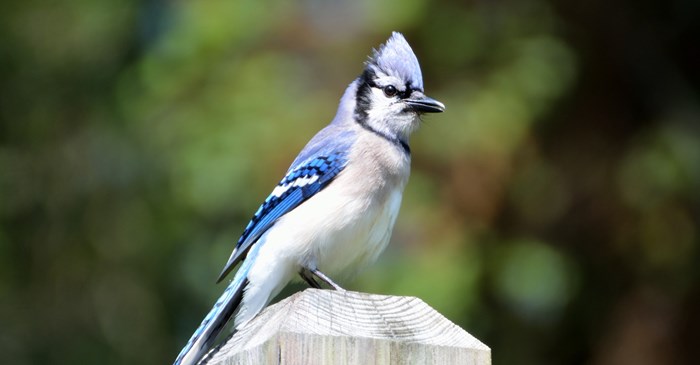The sight of a Blue Jay sometimes triggers strong emotions in people. When they arrive at the bird feeder, smaller birds scatter. But if you get to know the Blue Jay, you'll find there's much to love. In fact, Blue Jays are a bird watcher's favorite.
Here are five things you may not know about Blue Jays.
- Love oak trees? Thank a Blue Jay. Scientists believe that we owe it to the Blue Jay for helping oak trees proliferate after the last ice age. In the fall, they gather up acorns and shove them into the ground. Though they’ll cache anywhere from 3,000-5,000 acorns and recall most of them, a small percentage of acorns are forgotten, giving them a chance to grow and prosper.
- Blue Jays sometimes eat paint chips. What explains this strange behavior? Blue Jays have somehow figured out that the limestone found in some light-colored paints contains something their bodies need, which is calcium.
- They may be helpful to other birds. Blue Jays are fearless when it comes to defending their territory against predators. Smaller birds can benefit from this, especially when Blue Jays give their warning cry. When Blue Jays see a bird of prey, especially if an owl is roosting in a tree for the day, Jays will swarm and scold the predator until it moves on.
- Baby Blue Jays sometimes stray from their nests. Usually, this happens anywhere from one to three days before they’re ready to fledge. If they don’t return to the nest, however, the parents stop feeding the baby bird. If you find one of these so-called abandoned baby Jays, you can try moving it near or into the nest, and the parents should resume their care of it.
- They’re huge fans of peanuts. It’s not hard to find videos online of Blue Jays carting off whole shelled peanuts. Keep in mind, whole peanuts from the grocery store are often salted and seasoned for human consumption. Instead, add a few Lyric Peanut Pieces to your platform feeder, and you’ll know the Blue Jays are getting a fresh and nourishing source of protein.
